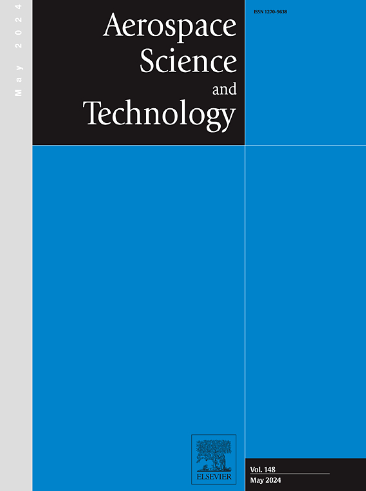High precision aerodynamic heat prediction method based on data augmentation and transfer learning
IF 5
1区 工程技术
Q1 ENGINEERING, AEROSPACE
引用次数: 0
Abstract
Data-driven modeling methods have become one of the main technologies for predicting aerodynamic heat in hypersonic conditions. However, due to the limitations of wind tunnel experimental conditions, the spatial distribution of aerothermal wind tunnel experimental data is often sparse, and the sample size is relatively small. Furthermore, there is a lack of direct correlation in the aerodynamic heat distribution data among different shapes of vehicles, which poses challenges for constructing high-performance data-driven aerodynamic heat prediction models. To address these issues, this paper proposes a high-precision aerodynamic heat modeling and prediction method based on data augmentation and transfer learning. First, integrating the concept of data fusion, we propose to enhance the sparse aerothermal wind tunnel experimental data by using deep neural networks and introducing low-precision numerical computation results. Next, based on the close physical correlation between boundary layer outer edge information and wall surface aerodynamic heat, we construct the aerodynamic heat prediction model ED-ResNet using a double-series residual neural network. Finally, by fine-tuning the ED-ResNet model for transfer learning, high-precision predictions of aerothermal wind tunnel experimental results for different shaped vehicles are achieved under small sample conditions. Verification using hypersonic double-ellipsoid, blunt cone, and blunt bicone shows that after data augmentation, the prediction error of the aerodynamic heat prediction model is significantly reduced to 1/3 of that when data augmentation is not used. Moreover, through transfer learning, the model effectively leverages existing hypersonic double-ellipsoid aerothermal wind tunnel experimental data to achieve high-precision predictions of aerodynamic heat distribution for blunt cone and blunt double cone under different incoming flow conditions, with normalized root mean square error(NRMSE) maintained below 10 %.
基于数据增强和迁移学习的高精度空气动力热预测方法
数据驱动建模方法已成为预测高超声速条件下气动热的主要技术之一。然而,由于风洞实验条件的限制,气动热风洞实验数据的空间分布往往比较稀疏,样本量相对较小。此外,不同形状飞行器之间的气动热分布数据缺乏直接关联性,这为构建高性能的数据驱动气动热预测模型带来了挑战。针对这些问题,本文提出了一种基于数据增强和迁移学习的高精度气动热建模和预测方法。首先,结合数据融合的概念,我们提出利用深度神经网络增强稀疏的气动热风洞实验数据,并引入低精度数值计算结果。其次,基于边界层外缘信息与壁面气动热之间密切的物理关联性,我们利用双序列残差神经网络构建了气动热预测模型 ED-ResNet。最后,通过微调 ED-ResNet 模型进行迁移学习,在小样本条件下实现了对不同形状飞行器气动热风洞实验结果的高精度预测。使用高超音速双椭圆体、钝锥体和钝双锥体进行的验证表明,经过数据增强后,气动热预测模型的预测误差显著降低到未使用数据增强时的 1/3。此外,通过迁移学习,该模型有效地利用了现有的高超声速双椭圆体气动热风洞实验数据,实现了不同入流条件下钝锥体和钝双锥体气动热分布的高精度预测,归一化均方根误差(NRMSE)保持在10%以下。
本文章由计算机程序翻译,如有差异,请以英文原文为准。
求助全文
约1分钟内获得全文
求助全文
来源期刊

Aerospace Science and Technology
工程技术-工程:宇航
CiteScore
10.30
自引率
28.60%
发文量
654
审稿时长
54 days
期刊介绍:
Aerospace Science and Technology publishes articles of outstanding scientific quality. Each article is reviewed by two referees. The journal welcomes papers from a wide range of countries. This journal publishes original papers, review articles and short communications related to all fields of aerospace research, fundamental and applied, potential applications of which are clearly related to:
• The design and the manufacture of aircraft, helicopters, missiles, launchers and satellites
• The control of their environment
• The study of various systems they are involved in, as supports or as targets.
Authors are invited to submit papers on new advances in the following topics to aerospace applications:
• Fluid dynamics
• Energetics and propulsion
• Materials and structures
• Flight mechanics
• Navigation, guidance and control
• Acoustics
• Optics
• Electromagnetism and radar
• Signal and image processing
• Information processing
• Data fusion
• Decision aid
• Human behaviour
• Robotics and intelligent systems
• Complex system engineering.
Etc.
 求助内容:
求助内容: 应助结果提醒方式:
应助结果提醒方式:


